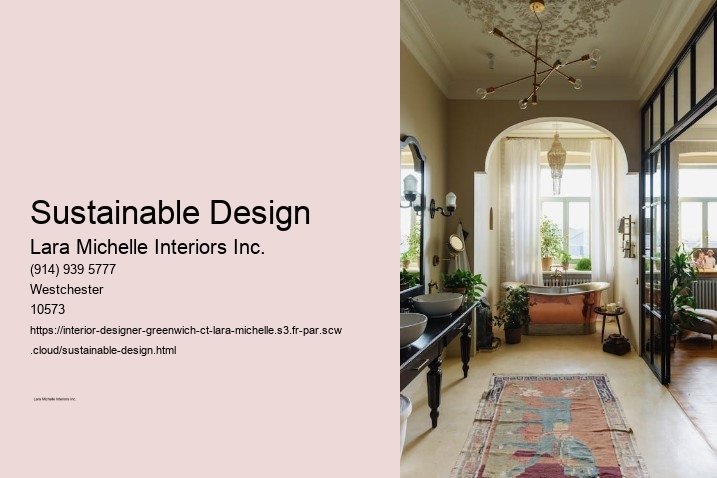

Common Mistakes to Avoid
Overlooking Comfort for Style
It's easy to get caught up in the latest design trends, but always prioritize comfort. Local design vendors A beautiful chair is useless if it's uncomfortable to sit in. Ensure that every piece of furniture you choose enhances both the look and feel of your space.
Ignoring Practical Needs
Functionality should never be an afterthought. Consider the practical needs of your space from the beginning. This will save you time, money, and frustration in the long run.
Conclusion
Balancing functionality and aesthetics in interior design is all about thoughtful planning and mindful choices. By prioritizing user needs, integrating style and comfort, and avoiding common pitfalls, you can create spaces that are both beautiful and practical. Read about the best Interior Designer Sustainable Design in Greenwich CT. Remember, a well-designed home is one where form and function coexist harmoniously.
How to Choose the Right Interior Designer in Greenwich, CT
Understanding Your Needs
Define Your Style
Before diving into the search for an interior designer, it's crucial to understand your own design preferences. Are you drawn to modern, minimalist designs, or do you prefer a more traditional, cozy feel? Collect images, create mood boards, and pinpoint styles that resonate with you. This will not only help you communicate your vision but also ensure you find a designer whose style aligns with yours.
Determine Your Budget
Establishing a budget early on is essential. Interior design projects can vary significantly in cost, depending on the scope and the designer's fee structure. Knowing your budget will help narrow down your options and prevent any financial surprises down the road.
Establish Your Timeline
Timing is everything. Whether you're looking to revamp your living space quickly or planning a more extended renovation, having a clear timeline will help you and your designer stay on track. Discuss your deadlines and ensure the designer can accommodate your schedule.
Researching Potential Designers
Check Their Portfolio
A designer's portfolio is a window into their creativity and expertise. Review their past projects to see if their style matches your vision. Pay attention to the details, finishes, and overall cohesiveness of their work.
Read Reviews and Testimonials
Client feedback can provide valuable insights into a designer's reliability and professionalism. Look for reviews on their website, social media, and other platforms.
Look for Credentials and Awards
Professional credentials and industry awards are indicators of a designer's commitment to their craft. Certifications from organizations like the American Society of Interior Designers (ASID) or awards from design competitions can add credibility to their expertise.
Initial Consultations
Prepare Questions to Ask
The initial consultation is your opportunity to gauge the designer's fit for your project. Prepare a list of questions about their experience, design process, and how they handle challenges. This will help you get a sense of their approach and professionalism.
Discuss Your Vision
Share your ideas, inspiration, and expectations during the consultation. A good designer will listen attentively and offer insights and suggestions that align with your vision. Their ability to understand and interpret your needs is crucial.
Evaluate Their Communication Skills
Effective communication is key to a successful design project. Assess how well the designer listens, explains concepts, and responds to your questions. Clear and open communication will ensure that your project runs smoothly.
Assessing Compatibility
Personality and Working Style
Compatibility goes beyond design preferences. Consider whether the designer's personality and working style match yours. A harmonious relationship will make the collaboration more enjoyable and productive.
Design Process and Flexibility
Each designer has a unique process. Understand how they approach projects, from initial concepts to final execution. Flexibility is also important – a designer who can adapt to changes and unexpected challenges will be a valuable partner.
Understanding Their Fee Structure
Design fees can be structured in various ways – hourly rates, flat fees, or a percentage of the project cost. Make sure you understand how the designer charges and what services are included. Transparency in fees will prevent misunderstandings later.
Making the Final Decision
Compare Proposals
After meeting with several designers, compare their proposals, including estimated costs, timelines, and design concepts. This comparison will help you make an informed decision based on who best meets your needs and budget.
Trust Your Instincts
Sometimes, your gut feeling can be the best guide. If a designer seems to understand your vision and you feel a connection, it’s likely a good match. Trust your instincts and choose the designer you feel most comfortable with.
Sign a Contract
Once you've made your choice, ensure all project details are documented in a contract. This should include the scope of work, timeline, fees, and any other agreements. A clear contract protects both you and the designer.
Working with Your Chosen Designer
Establish Clear Communication
Consistent communication is essential throughout the project. Set up regular check-ins and updates to discuss progress, address any concerns, and ensure everything is on track.
Set Expectations and Milestones
Define key milestones and deliverables with your designer. Having clear expectations helps both parties stay focused and aligned, ensuring that the project progresses smoothly.
Stay Involved Throughout the Process
While your designer will handle most of the work, your involvement is crucial. Design trade shows Regularly review designs, provide feedback, and make decisions promptly to keep the project moving forward.
Conclusion
Choosing the right interior designer in Greenwich, CT, involves understanding your needs, researching potential candidates, and assessing compatibility. By following these steps and maintaining clear communication, you can ensure a successful collaboration that brings your design vision to life. Happy designing!
The Importance of Space Planning in Interior Design
Introduction
Space planning might sound like something only astronauts need to worry about, but in reality, it’s a crucial aspect of interior design. So, what exactly is space planning, and why is it so important? Let’s dive in and explore the fascinating world of space planning in interior design.
What is Space Planning?
Space planning is essentially the process of organizing furniture and other design elements within a space to create a functional and aesthetically pleasing environment. Furniture selection It’s about making the best use of available space, ensuring that it meets the needs and preferences of those who use it.
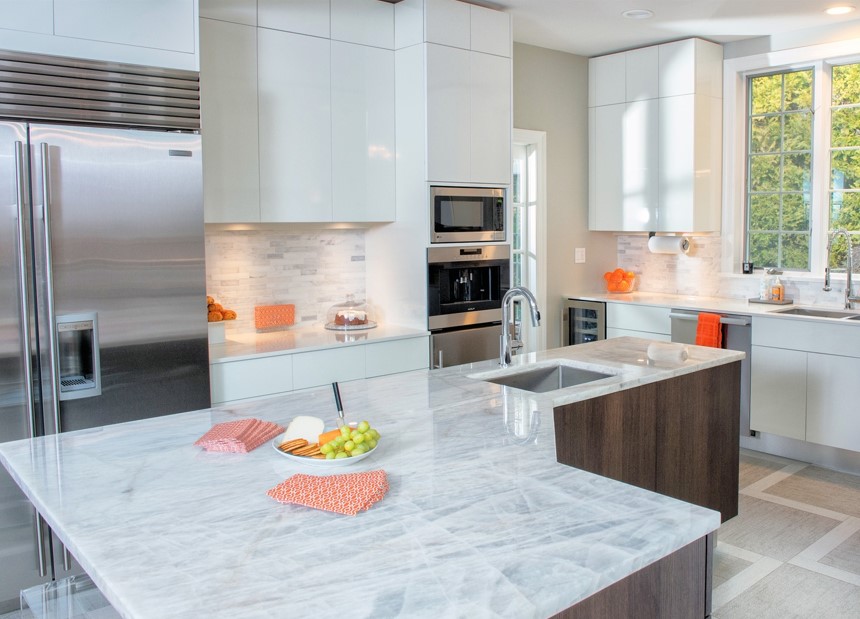
Importance of Space Planning in Interior Design
Why bother with space planning, you ask? Well, imagine trying to navigate through a cluttered room with no clear pathway or having a beautiful piece of furniture that doesn’t quite fit. Space planning helps to avoid these issues, making spaces more functional, comfortable, and visually appealing.
Understanding Space Planning
Definition of Space Planning
In simple terms, space planning involves creating a plan that defines the layout and arrangement of spaces within a room or building. This includes considering the dimensions of the space, the placement of furniture, and the flow of movement.
Elements of Space Planning
Several elements come into play in space planning, including furniture layout, traffic flow, and lighting.
The Role of Space Planning in Interior Design
Maximizing Space Efficiency
One of the main goals of space planning is to maximize the efficiency of the space. This means making sure that every square inch is utilized in the best possible way. Whether it’s a small apartment or a large office, effective space planning ensures that the space works for its intended purpose.
Enhancing Aesthetics
Space planning isn’t just about functionality; it’s also about creating a space that looks good. The way furniture and design elements are arranged can significantly impact the overall aesthetic of a room. A well-planned space feels balanced and harmonious, making it more enjoyable to be in.
Key Elements of Space Planning
Furniture Layout
The layout of furniture is a critical component of space planning. It involves deciding where each piece of furniture should go to optimize space and functionality. A good layout considers factors like the size of the furniture, the shape of the room, and the needs of the users.
Traffic Flow
Traffic flow refers to the way people move through a space. Effective space planning ensures that there are clear pathways that allow for easy movement without obstruction.
Lighting
Lighting plays a crucial role in space planning. It’s not just about having enough light, but also about the placement and type of lighting. Good lighting enhances the functionality and aesthetics of a space, making it more inviting and comfortable.
Steps in Space Planning
Assessing the Space
The first step in space planning is to assess the space. This involves taking measurements and understanding the dimensions of the room. It’s also important to consider any architectural features that could impact the layout.
Determining Needs and Preferences
Next, it’s essential to determine the needs and preferences of the users. What activities will take place in the space? What kind of furniture and design elements are required? Answering these questions helps to create a plan that meets the specific needs of the users.
Creating a Floor Plan
Once the space has been assessed and the needs have been determined, the next step is to create a floor plan. This is a scaled drawing that shows the layout of the space, including the placement of furniture and other design elements. Traditional design A floor plan helps to visualize the final result and make any necessary adjustments before implementation.
Common Mistakes in Space Planning
Ignoring Traffic Flow
One common mistake in space planning is ignoring traffic flow. It’s important to ensure that there are clear pathways for movement. Otherwise, the space can feel cramped and difficult to navigate.
Overlooking Lighting Needs
Another common mistake is overlooking lighting needs. Good lighting is essential for both functionality and aesthetics. It’s important to consider the placement and type of lighting to create a well-lit and inviting space.
Poor Furniture Arrangement
Poor furniture arrangement can also be a major issue in space planning. It’s important to consider the size and shape of the furniture, as well as how it fits into the overall layout of the space. A good arrangement enhances functionality and aesthetics.
Benefits of Effective Space Planning
Improved Functionality
One of the main benefits of effective space planning is improved functionality. A well-planned space is easier to use and meets the needs of its users. This makes daily activities more efficient and enjoyable.
Enhanced Comfort
Effective space planning also enhances comfort. A well-designed space feels more comfortable and inviting, making it a more enjoyable place to be.
Better Aesthetic Appeal
Finally, effective space planning enhances the aesthetic appeal of a space. A well-planned space looks balanced and harmonious, creating a visually pleasing environment.
Space Planning Tips for Small Spaces
Multi-functional Furniture
In small spaces, multi-functional furniture can be a game-changer. Pieces that serve multiple purposes, like a sofa bed or a dining table with storage, help to maximize space and functionality.
Vertical Space Utilization
Another tip for small spaces is to utilize vertical space. This can include adding shelves or using tall furniture to make the most of the available space.
Open Floor Plan
An open floor plan can also help to make a small space feel larger. Removing unnecessary walls and creating a more open layout can enhance the sense of space.
Space Planning for Different Rooms
Living Room
In the living room, space planning involves creating a comfortable and functional seating arrangement. It’s important to consider the placement of furniture, as well as the flow of traffic and lighting needs.
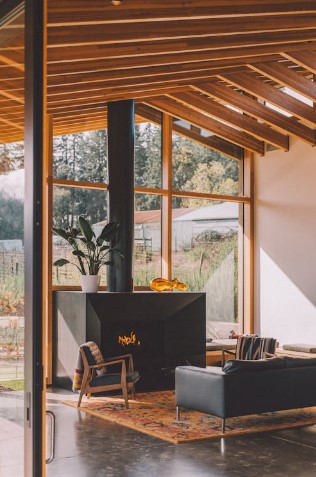
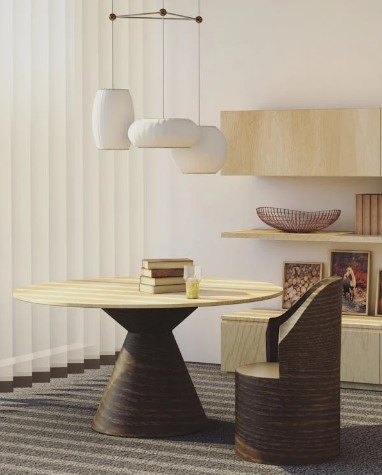
Bedroom
In the bedroom, space planning focuses on creating a relaxing and functional space. This includes the placement of the bed, storage solutions, and lighting.
Kitchen
In the kitchen, space planning is all about functionality. It’s important to consider the placement of appliances, storage, and work surfaces to create an efficient and enjoyable cooking space.
Bathroom
In the bathroom, space planning involves creating a functional and relaxing space. This includes the placement of fixtures, storage solutions, and lighting.
Technological Tools in Space Planning
Space Planning Software
There are many technological tools available to help with space planning. Space planning software allows users to create detailed floor plans and visualize the final result. This can be a great help in the planning process.
Virtual Reality in Interior Design
Virtual reality is another exciting tool in interior design. Feng Shui It allows users to virtually walk through a space and see how different design elements will look and feel. This can be a great way to test out ideas before making any final decisions.
Hiring a Professional vs. DIY Space Planning
Benefits of Hiring a Professional
Hiring a professional space planner or interior designer can have many benefits. They have the expertise and experience to create a well-planned space that meets the needs and preferences of the users. They can also help to avoid common mistakes and ensure that the final result is both functional and aesthetically pleasing.
Advantages of DIY Space Planning
On the other hand, DIY space planning can also be a great option. It allows for more personal input and creativity, and it can be a fun and rewarding process. With the right tools and resources, it’s possible to create a well-planned space without the need for a professional.
Case Studies of Successful Space Planning
Small Apartment Transformation
One example of successful space planning is the transformation of a small apartment. By using multi-functional furniture, vertical space, and an open floor plan, it’s possible to create a functional and aesthetically pleasing space, even in a small area.
Office Space Optimization
Another example is the optimization of office space. Effective space planning can help to create a more efficient and comfortable working environment. This can include the placement of desks and workstations, as well as the use of lighting and storage solutions.
Future Trends in Space Planning
Sustainable Design
One future trend in space planning is sustainable design. This involves using eco-friendly materials and practices to create a more sustainable and environmentally friendly space.
Smart Homes
Another trend is the rise of smart homes. This involves integrating technology into the design of a space to create a more connected and efficient environment. This can include things like smart lighting, heating, and security systems.
Conclusion
Recap of Key Points
To sum up, space planning is a crucial aspect of interior design. It involves organizing furniture and other design elements within a space to create a functional and aesthetically pleasing environment. Effective space planning can enhance the functionality, comfort, and aesthetic appeal of a space.
Final Thoughts on the Importance of Space Planning
Whether you’re designing a small apartment or a large office, space planning is essential. It helps to ensure that the space meets the needs and preferences of its users, making it a more enjoyable and functional place to be. So, next time you’re planning a space, remember to consider the importance of space planning and how it can transform your environment.
Top Interior Design Trends for 2024
Introduction
Welcome to the world of interior design in 2024! As we move forward, our living spaces are evolving in exciting ways. Whether you're planning a complete home makeover or just looking for a few updates, staying on top of the latest trends can make all the difference. This year, it's all about sustainability, functionality, and a dash of boldness. Let's dive into the top interior design trends for 2024 that will help you create a stylish and comfortable home.
Embracing Sustainability
Eco-Friendly Materials
Sustainability is no longer just a buzzword; it's a lifestyle. In 2024, eco-friendly materials are taking center stage. Think recycled wood, bamboo, and reclaimed metals. These materials not only reduce your carbon footprint but also add a unique charm to your space.
Sustainable Practices
Beyond materials, sustainable practices are becoming more prevalent. This includes energy-efficient lighting, water-saving fixtures, and incorporating solar panels. Designing with sustainability in mind ensures that your home is both beautiful and responsible.
Minimalist Aesthetics
Clean Lines and Open Spaces
The minimalist trend continues to thrive in 2024. Clean lines, open spaces, and a clutter-free environment are key elements. This aesthetic promotes a sense of calm and order, making your home a peaceful retreat from the chaos of everyday life.
Functional Furniture
Functionality is crucial in minimalist design. Home improvement Look for furniture that serves multiple purposes, like a sofa that doubles as a bed or a coffee table with storage space. This approach maximizes utility without compromising on style.
Bold Colors and Patterns
Vibrant Hues
While minimalism focuses on simplicity, there's also a trend towards bold, vibrant colors. Rich jewel tones like emerald green, sapphire blue, and ruby red are making a comeback. These colors add depth and personality to any room.
Statement Patterns
Patterns are becoming more adventurous too. From geometric designs to intricate florals, statement patterns can make a room stand out. Don't be afraid to mix and match patterns to create a dynamic and visually appealing space.
Biophilic Design
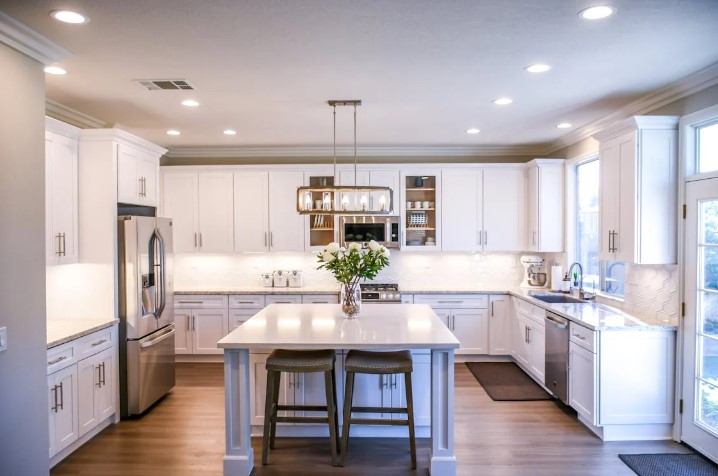
Hiring an interior designer in Greenwich, CT, like Lara Michelle Beautiful Interiors, Inc., ensures your home reflects your personal style while maximizing functionality. Our local expertise allows us to source exclusive materials and collaborate with top-notch contractors, creating bespoke interiors that enhance your home's value and appeal. We streamline the process, saving you time, stress, and potential costly mistakes.
Our project budget minimum is $150K (construction and décor costs). Each year we take a couple of projects that fall under this depending on location and other variables. Please fill out the form on our Contact Page with your design details to see if we’d be a good fit, we’d love to hear from you!
An interior designer creates functional and aesthetically pleasing interior spaces tailored to your specific needs and preferences. At Lara Michelle Beautiful Interiors, Inc., we handle everything from space planning and color coordination to selecting furniture, fixtures, and finishes. We oversee the entire project from concept to completion, ensuring that every detail aligns with your vision.
The cost of hiring an interior designer in Greenwich, CT, can vary based on the scope and complexity of the project. At Lara Michelle Beautiful Interiors, Inc., we offer customized pricing to suit your unique project needs. We provide a detailed estimate after an initial consultation, ensuring transparency and aligning with your budget expectations.
Whatever works best for you! If you have a contractor you love, we are happy to work with them. If you need awesome recommendations or want to compare estimates, Lara will gladly refer her amazing team!
Finding the best interior designer in Greenwich, CT, involves researching portfolios, reading client reviews, and scheduling consultations. At Lara Michelle Beautiful Interiors, Inc., we pride ourselves on our award-winning designs, exceptional client service, and extensive experience in the Greenwich area. We invite you to review our portfolio and client testimonials to see our work's quality and diversity.
Starting with a comprehensive walk through of your home and/or review of your plans, we gather your ideas and desires for your home. Next, designs are created with in-house drawings, renderings, and design boards. After your approvals, we facilitate costs, create a schedule, and begin ordering. Upon work commencing, we manage contractors, oversee progress, inspect and place deliveries. Finally, styling will finish your home and now it’s time to host your housewarming party!
Great! Please fill out our form on our Contact Page, the more details you share, the better! Or call our office at 914-939-5777, we look forward to hearing from you!
An interior decorator focuses on aesthetic aspects like color schemes, furniture, and accessories, while an interior designer addresses both the aesthetics and functionality of a space. At Lara Michelle Beautiful Interiors, Inc., we offer comprehensive design services, including space planning, structural modifications, and coordinating with contractors to ensure cohesive and functional results.
Yes! Our kitchens and most bathroom designs include Lara’s custom cabinetry. Built-ins such as bookcases, TV units, mudroom benches & cubbies, fireplace mantels, wall paneling, detailed moldings…you name it, we can do it beautifully and typically faster than any cabinetry company.